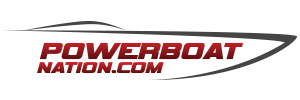The engine is the heart and soul any powerboat. If you are in the market to put together your own motor, we’ve compiled these tips in order to help you make sure the engine in your boat is ready for business. We want to help you put it together easier, better and faster so you can get your boat out on the water in no time, and maybe help you avoid some costly mistakes along the way!
1) With filling ring gaps, it is recommended that you check with the manufacturer for gap recommendations. Manufactures usually have a formula, for example “core times the number of rings.” Keep in mind when measuring gaps, use a bore to square up the ring; to make measurements accurate.
2) Engine bearings come in three different sizes: Standard, 0.001-inch under-1, and 0.001-inch over 1x. This is a helpful hint when trying to get the correct amount of clearance for the oil
3) Always apply a liberal coating of assembly lube when installing a cam. After installing the cam, make sure its spin is smooth with no hard spots.Hard spots in the rotation can mean there is an issue the cam being bent, journals not inline, or the bearings are crooked. The cam should always have smooth bump free spin.
4) To minimize friction on the cylinder head make sure you use a good molly lube,like the one from ARP, when bolting. Apply the lube to the threads and to the flange of the bolts and washers. This will provide a more consistent torque.
5) For a good seal, on the head bolts for the block ,apply sealant to the threads of bolts and down the treads into the block itself.
6) Before installing a new part, always clean them in solvent tank or bath. Let the parts soak in lacquer thinner or denatured alcohol to remove any contaminants caused by the coating to prevent rust. Let the parts soak for a minute or two then blow them off with compressed air.
7) Make sure you coat all moving parts with assembly lube or oil before installation.For parts that are hard to lube, just soak them for about a half hour in the oil. Doing so will prevent damaged when the engine is fired up.
8) Keep in mind when installing a roller cam, that all the arrows on the tie bar are pointing up. Rollers that are shipped from the factory can be shipped upside down.
9) When installing an oil pump pick-up, you must make sure that it is at least 1/4-inch from the floor of the oil pan. A great tip for the correct distance is to use some clay in a small bag and then set it right on top of the oil pump. Install the pan with the gasket. This will crush the clay and show you the distance you have.
10) When using a standard-type oil pump with a push-in pick-up, you must use a tape measure to get your clearance measurements. Measure the height of the pan, then measure the pan rail on the motor to the pick-up. The difference is your clearance. If need be the pick-up can be adjusted to the correct clearance.
11) When the correct position of the pick-up is found, you’ll need to weld it into place. Start by removing the top plate of the oil pump; this will prevent scarring of the pump gears. While you have the top plate off, pre-prime the oil pump.
12) When setting the valve lash use the “intake opening, exhaust closing”method. Start by turning the engine over clockwise, watching the intake valve’s rocker arm for the cylinder you’re adjusting, when it is open lash the cylinder’s exhaust valve. Once the the exhaust valve is about half-closed set the intake lash.





